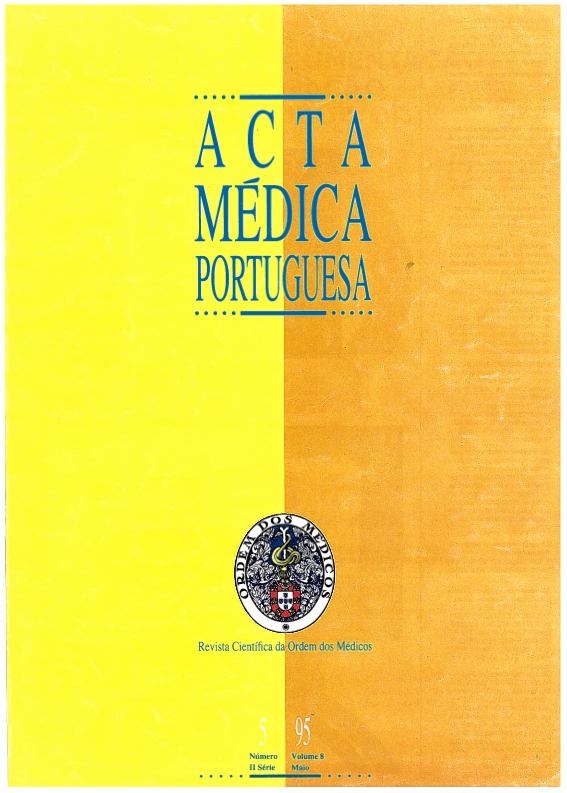Análise da histaminase plasmática em doentes esquizofrénicos e sua relação com paraâmetros clínicos.
DOI:
https://doi.org/10.20344/amp.2702Resumo
Previous studies have investigated putative alterations in histamine and histamine receptors in schizophrenia, and evidence in favour of the role of this amine as a neurotransmitter or as a neuromodulator was found. In the present study the activity of plasmatic histaminase was analysed, with histamine and with cadaverine as substrates, in a group of 23 schizophrenic patients and compared with that of healthy controls (n = 32). Plasma histaminase activity was determined using Gordon and Peters spectrophotometric method, and the results were expressed in mumoles of H2O2 transformed/hour/litre of plasma at 25 degrees C. Plasmatic histaminase, using histamine as substrate, was significantly increased in schizophrenic patients as a whole compared with the healthy controls. On the other hand, when cadaverine was used as substrate plasma histaminase was significantly reduced in female schizophrenics but not in males. When patients were divided according to 17 clinical characteristics it was found that the following subgroups were significantly associated to high levels of plasma histaminase (using histamine as substrate): the non mentally deteriorated schizophrenic patients compared with mentally deteriorated schizophrenic patients and those with thymic symptoms as opposed to those without thymic symptoms. An extension of this series and a prospective analysis are required to further define the clinical and biological significance of the alteration of this biochemical parameter in schizophrenia, and particularly in relation with a subgroup of schizophrenia with a more favourable course.Downloads
Downloads
Como Citar
Edição
Secção
Licença
Todos os artigos publicados na AMP são de acesso aberto e cumprem os requisitos das agências de financiamento ou instituições académicas. Relativamente à utilização por terceiros a AMP rege-se pelos termos da licença Creative Commons ‘Atribuição – Uso Não-Comercial – (CC-BY-NC)’.
É da responsabilidade do autor obter permissão para reproduzir figuras, tabelas, etc., de outras publicações. Após a aceitação de um artigo, os autores serão convidados a preencher uma “Declaração de Responsabilidade Autoral e Partilha de Direitos de Autor “(http://www.actamedicaportuguesa.com/info/AMP-NormasPublicacao.pdf) e a “Declaração de Potenciais Conflitos de Interesse” (http://www.icmje.org/conflicts-of-interest) do ICMJE. Será enviado um e-mail ao autor correspondente, confirmando a receção do manuscrito.
Após a publicação, os autores ficam autorizados a disponibilizar os seus artigos em repositórios das suas instituições de origem, desde que mencionem sempre onde foram publicados e de acordo com a licença Creative Commons









